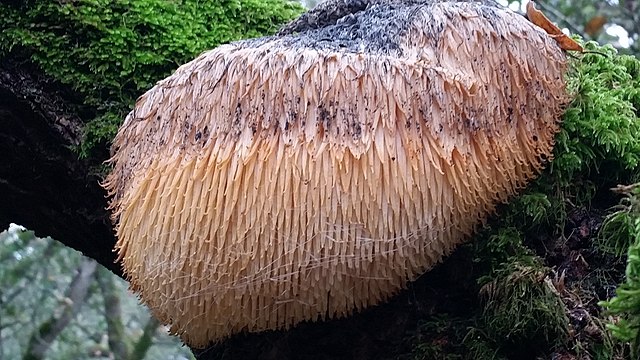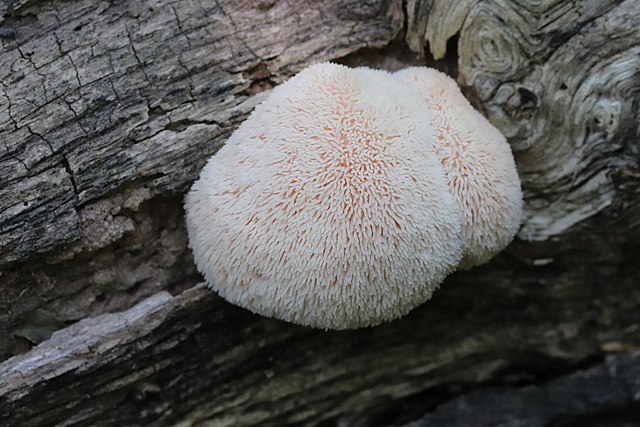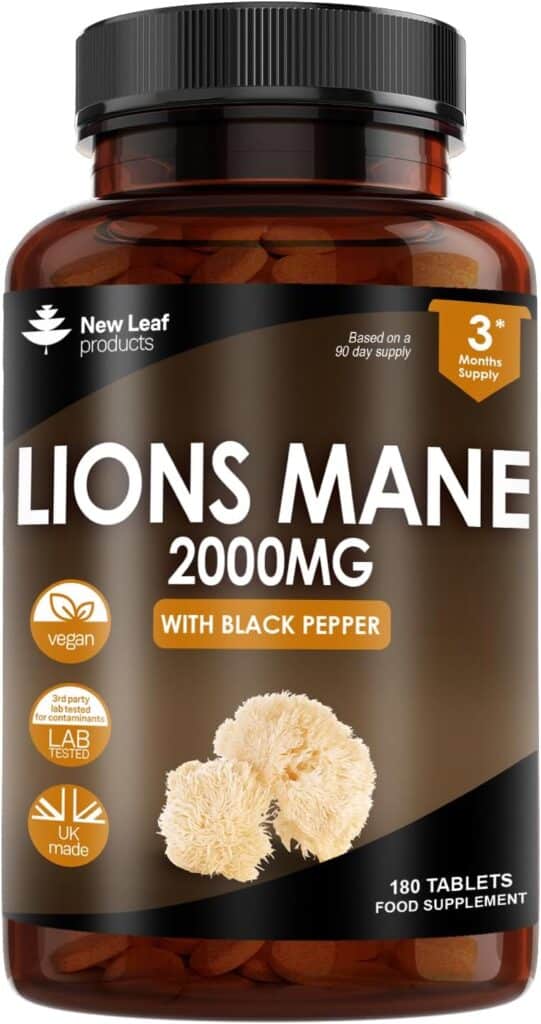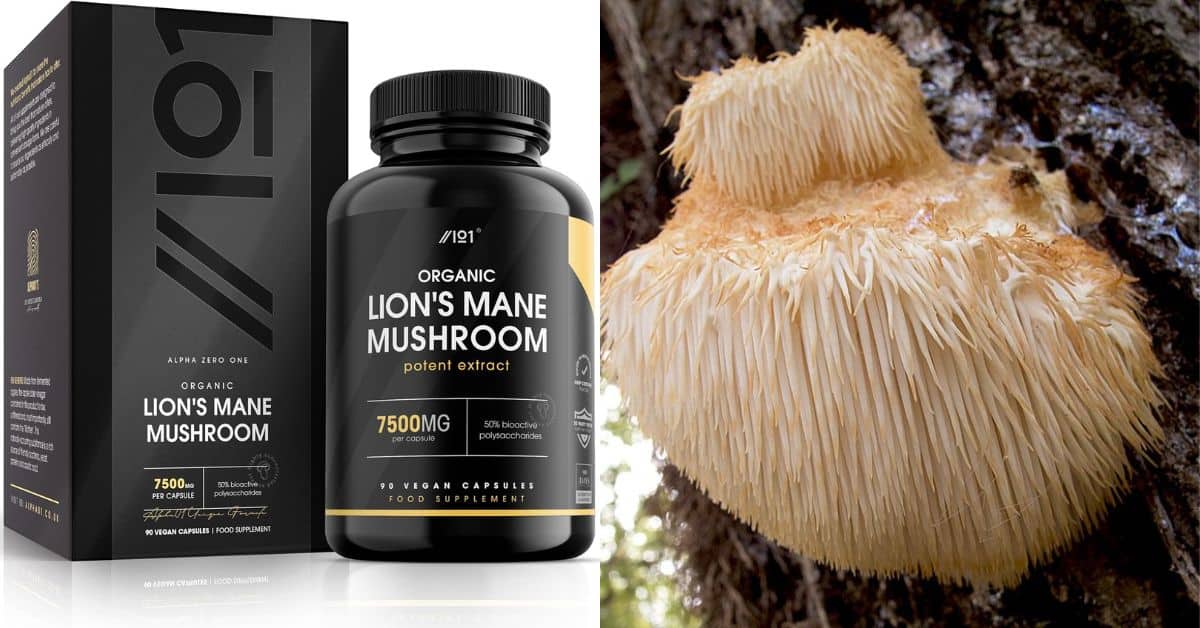Lion’s Mane Mushroom – Extraction, Health Benefits & Culinary Application
You’ve probably seen a lot of mushrooms of unusual sizes, shapes, and colors in your life, but chances are you’ve never come across one quite like a Lion’s Mane. Some people even think that its visual characteristics resemble cheerleaders’ pom poms. But despite its funky appearance, this mushroom comes with more benefits to your health than you can imagine.
In this article, we’ll discuss the history of the traditional use of the Lion’s Mane mushroom in ancient cultures and help you understand its use in the modern culinary industry.
Please leave a review or any memories of this snack in the comments at the bottom of this page. Thank you!

What Makes Lion’s Mane Mushroom Unique?
Lion’s Mane is a large, white mushroom that attracts our attention with its rounded shape and unusual spine-like growths that are usually more than an inch long. Chances are, you’d hardly miss this amazing mushroom in the woods, as with its large size, the Lion’s Mane mushroom is a bright spot in a misty forest. We are not telling you this figuratively – if you get close to the Lion’s Mane, its stark whiteness will surely attract your attention.
A Lion’s Mane consists of a visible body and a root-like mycelium. Both parts of the mushroom are rich in vitamins B, C, D, thiamin, riboflavin, and niacin. Lion’s Mane is also an excellent source of essential minerals such as manganese, zinc, and potassium.
Where to Find?

The term of emergence of the Lion’s Mane depends on whether we live in North America, Europe, or Asia, but it occurs mainly in late summer and autumn. Cool temperatures are creating ideal environmental conditions for Lion’s Mane, but it ends its life as soon as the ambient temperature drops significantly and severe frosts begin.
Lion’s Mane especially likes to appear on dead or dying trees. It’s especially common in temperate forests in the Northern Hemisphere. The list of trees this mushroom usually resides on includes oak, beech, maple, and walnut. Interestingly, unlike other mushrooms, Lion’s Mane never grows from the ground. The reason is that it feels great anywhere in the tree, including under a fallen tree. Still, its location depends on where the tree has a cut or vulnerable spot.
The thing that usually impresses people about the Lion’s Mane is that it has grown from the same place annually for about 20 years. This means that if you find the dwelling of the Lion’s Mane, you should definitely remember this place for the future.
How to Prepare Lion’s Mane Mushrooms?

If you’re going to use Lion’s Mane mushrooms in your meals, one thing you should know is that the inner part of the mushroom should be completely white. The reason is that the yellow or brown color on any part indicates that it’s already overripe and, therefore, not useful as a food.
Generally, you can consume Lion’s Mane mushrooms raw, cooked, or dried (sometimes even raw as a tea – the choice is quite diverse and depends entirely on your preferences). But, what may surprise you is that most people associate these mushrooms with seafood. Specifically, the mushroom can have flavors of crab or lobster. That’s exactly why we suggest using Lion’s Mane mushrooms in dishes such as risotto, pasta, or soup.
Vegetarian and vegan people also use Lion’s Mane mushrooms as an alternative to chicken since the taste and structure are quite similar.
3 Potential Health Benefits of Lion’s Mane Mushroom
1. It may kill cancer cells
Certain studies suggest that the Lion’s Mane mushroom can be used against cancer. In those studies, the cancer cells suddenly died after mixing Lion’s Mane mushroom extract with human cancer cells in a test tube. Specifically, this effect has been reported on liver, colon, stomach, and blood cancer cells.
While they may not be able to totally kill the cancer cells, the Lion’s Mane mushrooms indeed slow down the process of cancer spreading. For instance, a 2014 study proved that Lion’s Mane was more effective than traditional cancer medications. Nevertheless, the subjects of this study were mice, and the anti-cancer effect of the fungus has not yet been tested in humans.
2. Alleviates inflammation & oxidative imbalance
Considering that the Lion’s Mane mushroom contains effective anti-inflammatory antioxidants, consuming it can help prevent heart disease and autoimmune disorders. In fact, scientists explored 14 different types of mushrooms and Lion’s Mane had the strongest antioxidant abilities.
This fact is especially interesting because antioxidants help to strengthen the immune system, prevent cell damage, and reduce the risk of cardiovascular diseases.
3. Boosts the immune system
Another significant benefit of this mushroom is that it can strengthen our immunity and protect the body from various harmful pathogens, bacteria, and viruses. And this is quite important for general health because a strong immune system is an important factor in avoiding conditions, such as fatigue, memory loss, inattentiveness, or weakness. But do keep in mind that the research in this field is still ongoing.
Final Thoughts
As we can see, Lion’s Mane is a wonderful mushroom to experiment with in the kitchen. But remember that a safe dose of Lion’s Mane mushroom depends on our age and general health. For instance, for adults to improve cognition, some researchers recommend only 3 to 5 grams of Lion’s Mane mushroom per day. Nevertheless, to determine the individual dose, be sure to consult your doctor before taking it.

Nato is a content writer and researcher with a background in psychology. She’s passionate about writing about the candy industry and exploring the cultural significance of sweets and treats. She believes that the stories behind our favorite snacks can reveal a great deal about our values.
Please leave a review or any memories of this snack in the comments below. Thank you!
Click here for a full A-Z list of Snacks and Candy
